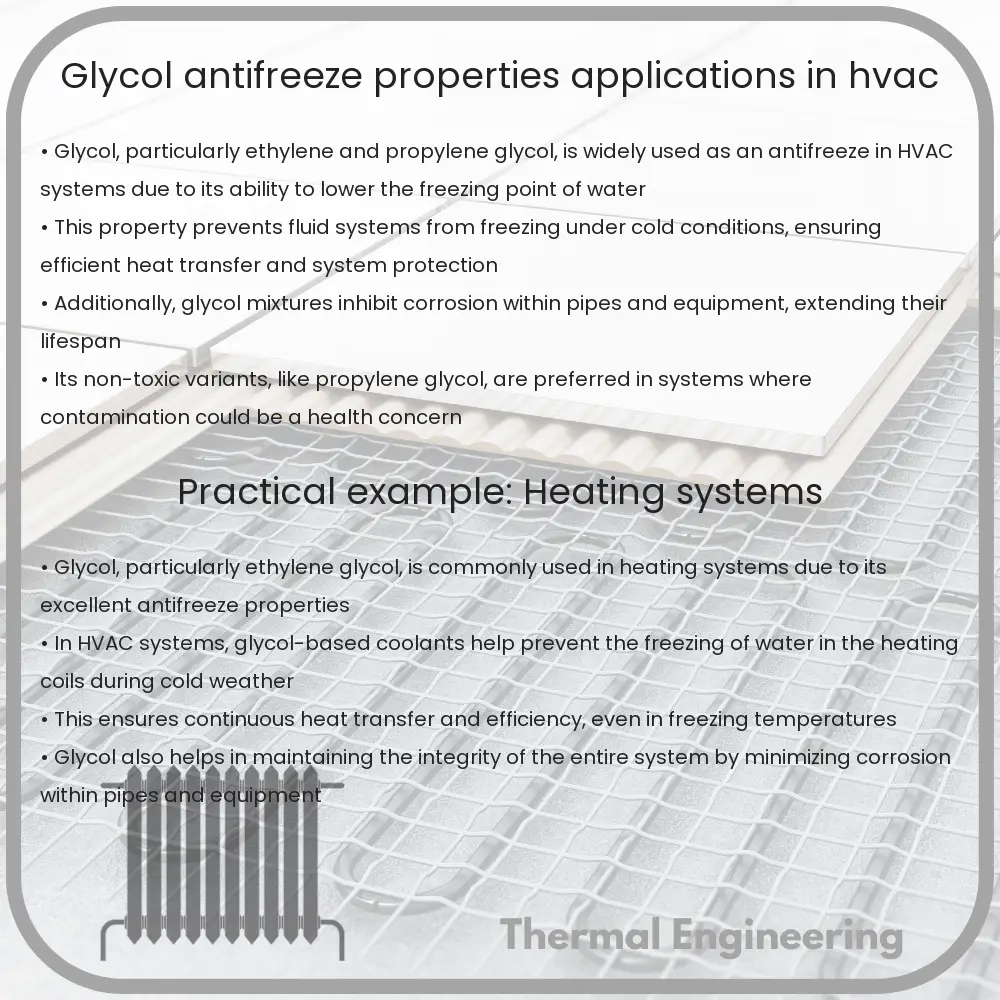Learn about glycol and its antifreeze properties, crucial for efficient HVAC system operations and safe handling practices.

Glycol and Its Antifreeze Properties
Glycol, specifically ethylene glycol and propylene glycol, is a chemical compound widely known for its antifreeze properties. These properties make glycol an essential component in various applications, particularly in heating, ventilation, and air conditioning (HVAC) systems. Glycols lower the freezing point of water, preventing the formation of ice and ensuring systems operate efficiently even in cold climates.
Chemical Characteristics of Glycol
Ethylene glycol (C2H6O2) and propylene glycol (C3H8O2) are colorless, viscous liquids with a sweet taste. Both chemicals are highly soluble in water and are hygroscopic, which means they absorb water from their surroundings. This characteristic is crucial for their role in dehumidifying air in HVAC systems.
The main difference between these two glycols is their toxicity. Ethylene glycol is toxic if ingested and requires careful handling and disposal. Propylene glycol, however, is generally recognized as safe for use in food and pharmaceuticals and is preferred in applications where toxicity is a concern.
Antifreeze Properties
Glycols are effective antifreeze agents due to their ability to depress the freezing point of water. For instance, adding ethylene glycol to water forms a eutectic mixture that can lower the freezing point of pure water from 0°C down to about -37°C. This is calculated using the formula:
- Freezing Point Depression (ΔTf) = Kf * m
where ΔTf is the freezing point depression, Kf is the cryoscopic constant, and m is the molality of the solution.
Applications in HVAC Systems
In HVAC systems, glycol is used primarily as a heat-transfer medium. Thanks to its antifreeze properties, it is ideal for use in:
- Chillers and refrigeration systems
- Solar heating systems
- Ice rinks
- Data center cooling
By circulating glycol through a closed-loop system, it efficiently transports heat away from or towards an area, depending on the system’s design. This adaptability makes glycol-based coolants essential for efficient thermal management in both industrial and residential settings.
Safety and Environmental Considerations
While propylene glycol is less toxic than ethylene glycol, both compounds need to be handled carefully, particularly in large-scale industrial environments. Spills need to be contained to prevent any potential harm to the environment. Disposal and recycling of glycol solutions should follow local regulations to avoid water contamination.
Furthermore, engineers and technicians handling glycol should use appropriate personal protective equipment (PPE) and ensure that all safety guidelines for handling chemicals are strictly observed. Regular training and adherence to safety protocols are essential to mitigate any health risks associated with exposure to glycol vapors or contact with the skin.
Conclusion
Glycol’s role in antifreeze applications, especially within HVAC systems, is vital for the efficient operation of heating and cooling services worldwide. Its ability to function effectively under varying temperatures and its versatile applications underscore glycol’s importance in modern engineering solutions. However, it is crucial to handle glycol with care, considering its potential environmental and health impacts. With proper management, glycol can continue to be a valuable agent in the industrial and commercial sectors.